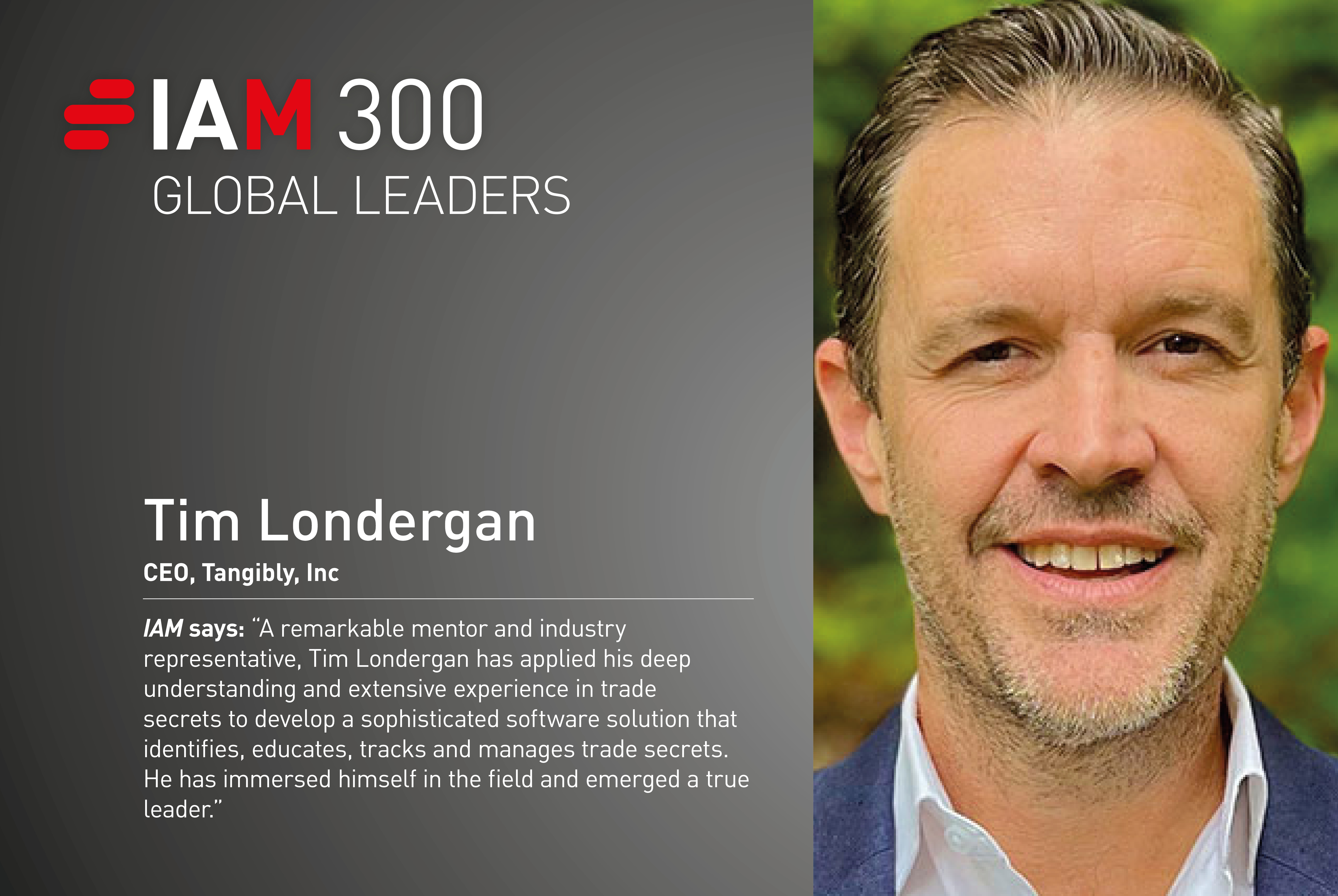Timothy Londergan
As founder and CEO of Tangibly, you are truly an expert in trade secrets.What are your top tips for how clients can integrate trade secret protection into existing IP strategies?
For the patent community, trade secrets can complement and strengthen your patent position. Too often, companies think of patents and trade secrets as an either/or proposition, but that is short-sighted as they each have their advantages and disadvantages. Once you have a well-designed IP strategy, the most impactful thing you can do is to start treating your trade secrets like any other asset – log, track and manage them.
Tangibly is the first company to build a SaaS platform focused on trade secrets. Category creation is notoriously difficult; what inspired you to try to tackle this?
When we first started looking at the litigation data in 2019 and speaking to litigators, it was clear that companies needed help in managing the processes around trade secrets. It was also evident that many issues that companies were having a hard time with – asset documentation, expired non-disclosure agreements, missing employment agreements, who had access to trade secrets – were all things that technology could easily help with. We also saw that some of the best companies in the world were running a trade secret process, but often with hacked-together solutions. After seeing enough of these signals, we decided it was time to go and build.
What recent decisions or legislative developments are having the biggest impact on trade secrets right now?
Both the Defend Trade Secrets Act of 2016 – the first federal trade secret law in the United States – and the 2016 EU directive on trade secrets that harmonised EU trade secret laws brought a new level of attention to trade secrets. Since then, the scale of recent decisions has reached billions, which has only furthered interest in the area. It is worth noting is that in 2022, Appian won US$2 billion in the decision over Pegasystems.
Additionally, companies are now bringing trade secret matters at the International Trade Commission – a venue that is well established in patent disputes for companies seeking to block the import of an infringing technology into the United States. In 2021, the blockbuster LG Energy Solution Ltd v SK Innovation Co case was bought before the commission, which resulted in a 10-year import ban on SK products (and a subsequent settlement between the companies to avert it).
Tangibly’s customers range from deep-tech start-ups to life science companies to multi-billion-dollar manufacturing organisations. What are the most pressing issues facing your clients right now?
We see a wide range of capabilities, but on average, most companies are in their infancy when it comes to managing trade secrets. Sometimes the issues are as fundamental as needing a policy and education to more involved technology needs. We see some of the world’s largest companies managing their trade secrets on an Excel file!
We have architected our platform to support a wide range of capabilities and we are able to support our customers regardless of where they are on their journey.
As trade secret cases make headlines around the world, how do you predict attitudes towards these assets to evolve in the next five years?
I am amazed at the acceleration of interest in trade secrets since we started Tangibly in 2020, and I think this is just beginning. I suspect in five years we will see three key things:
- most big law firms will offer a trade secret counselling practice;
- most Fortune 1000s will have a trade secret manager role, if not an entire organisation; and
- litigation finance will be a much bigger part of the landscape for trade secret lawsuits.
Timothy Londergan
Serial entrepreneur Tim Londergan is CEO and founder of Tangibly, which is the world’s first enterprise SaaS for trade secret management. Passionate about technology, intellectual property and innovative business models, he was previously a portfolio manager and head of commercial development at Intellectual Ventures. Mr Londergan began his career as co-founder of Seattle-based nanotechnology company Lumera. He has a PhD in organic chemistry from the University of Southern California.
